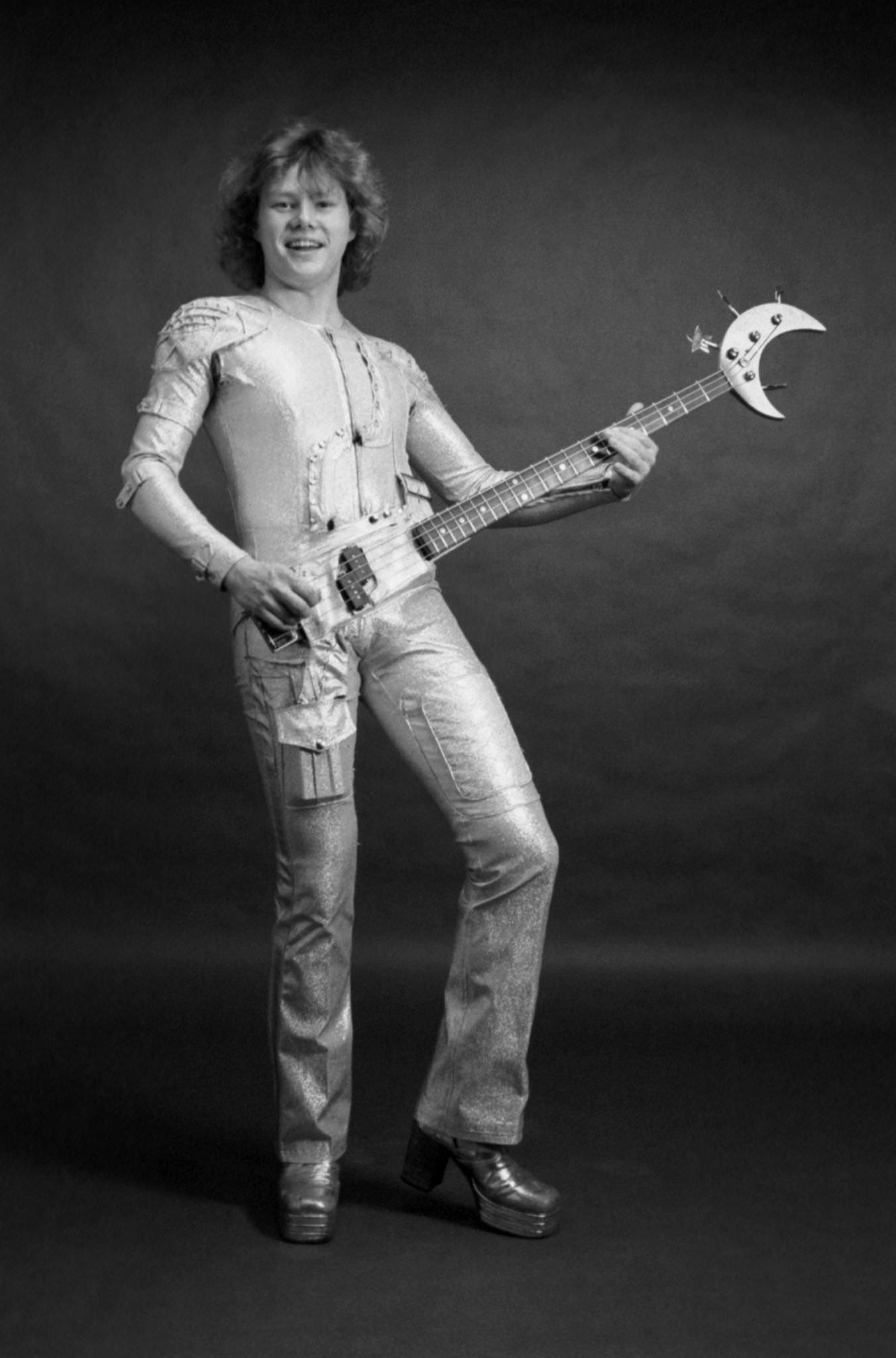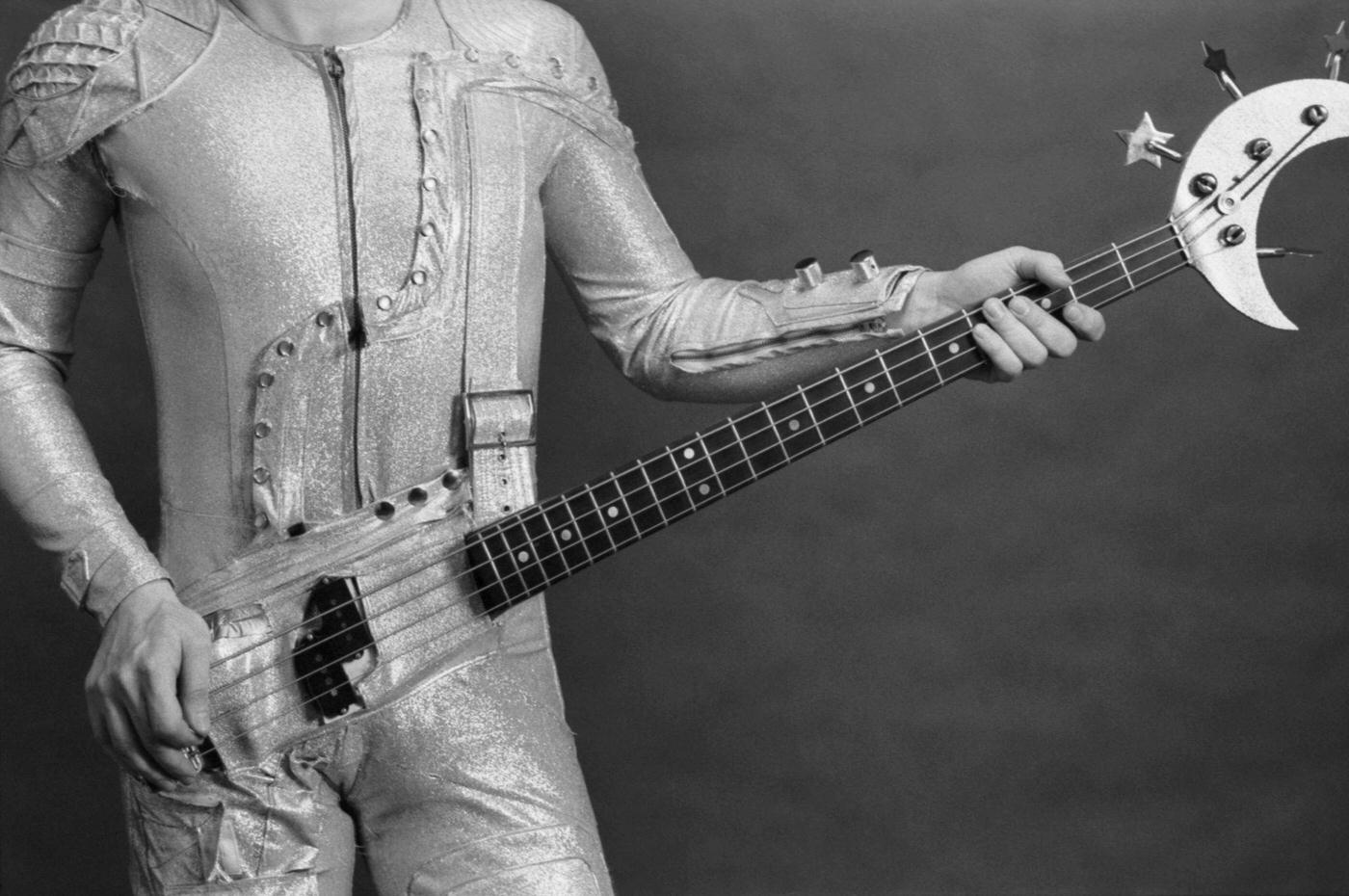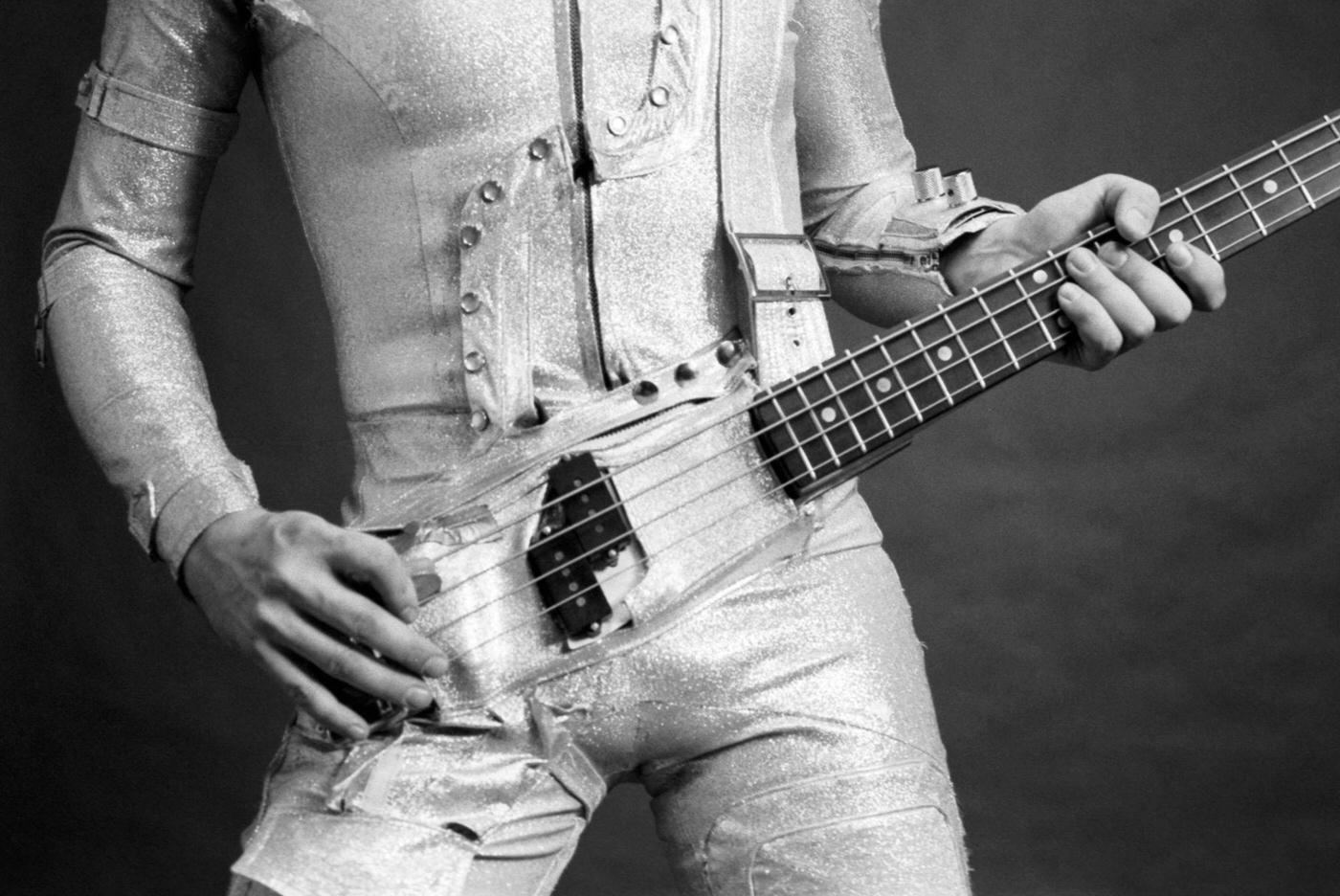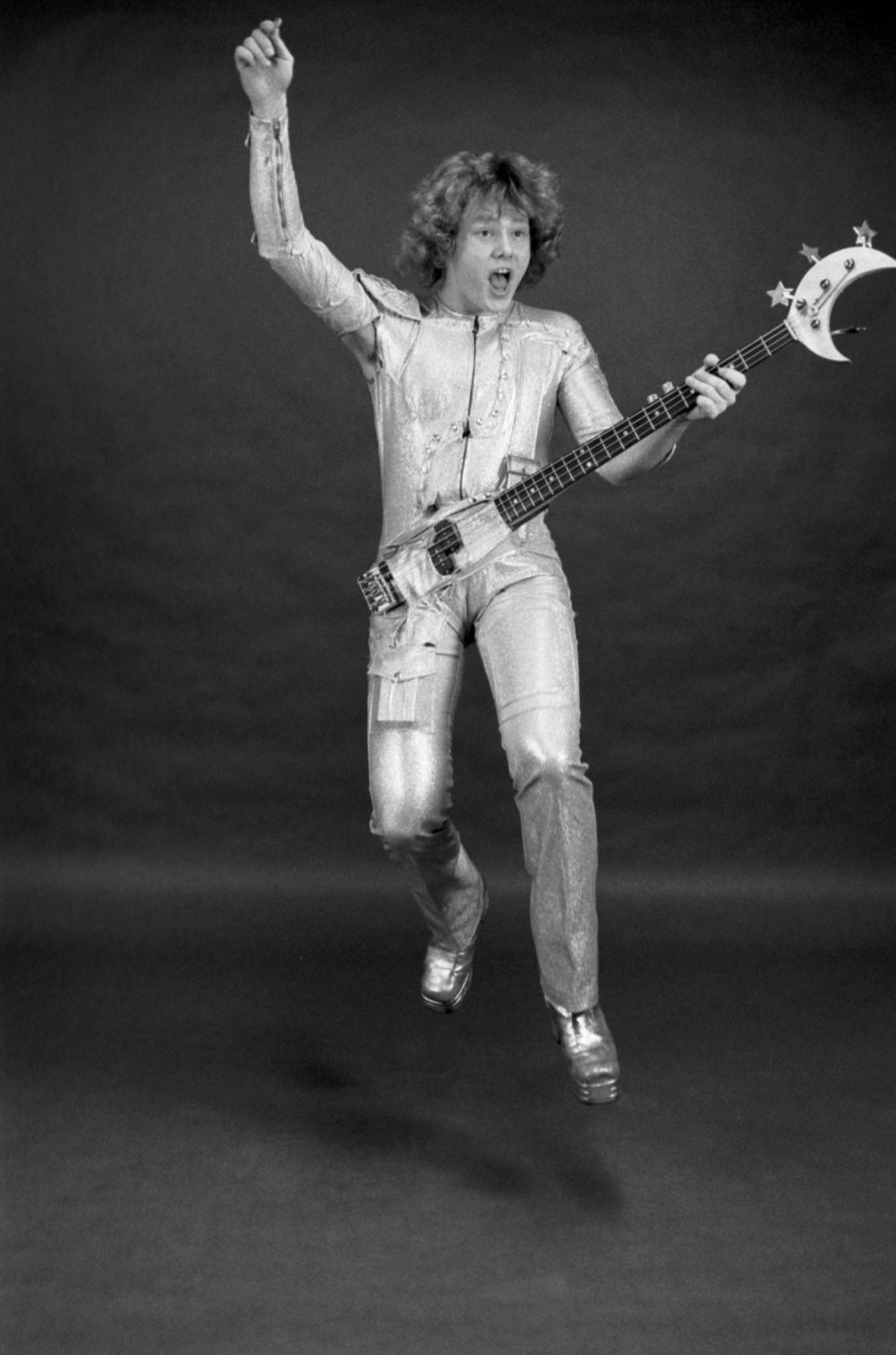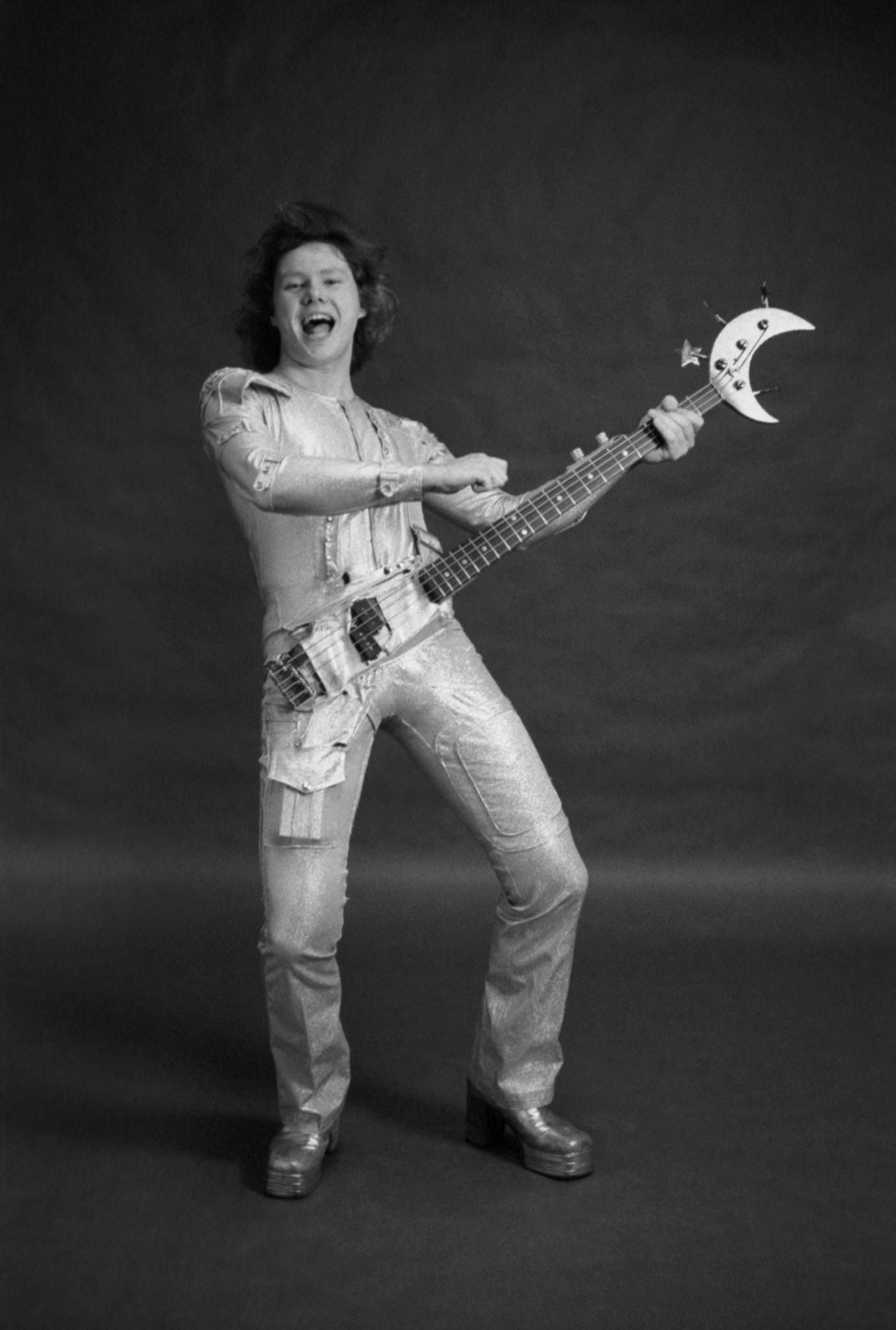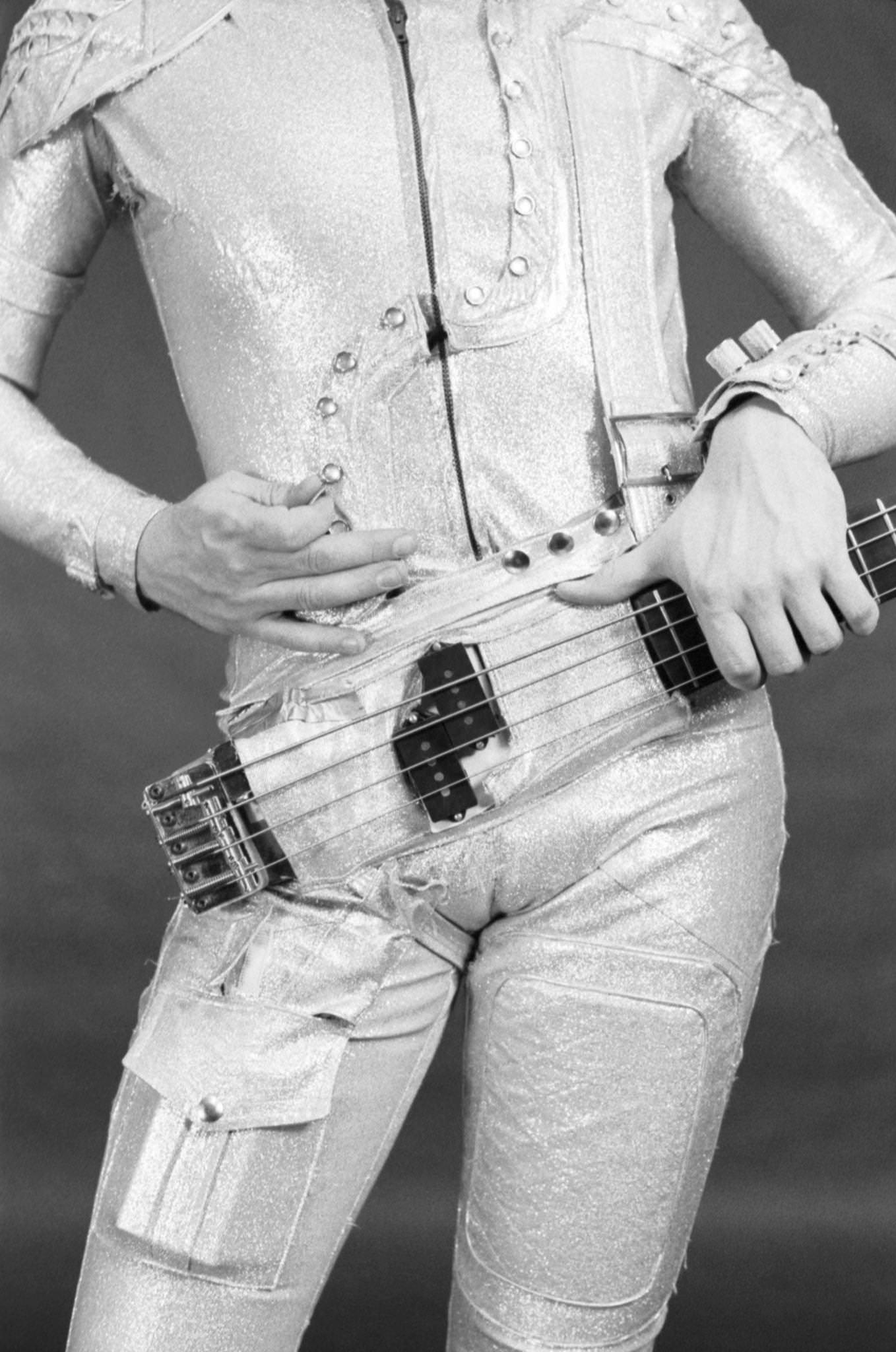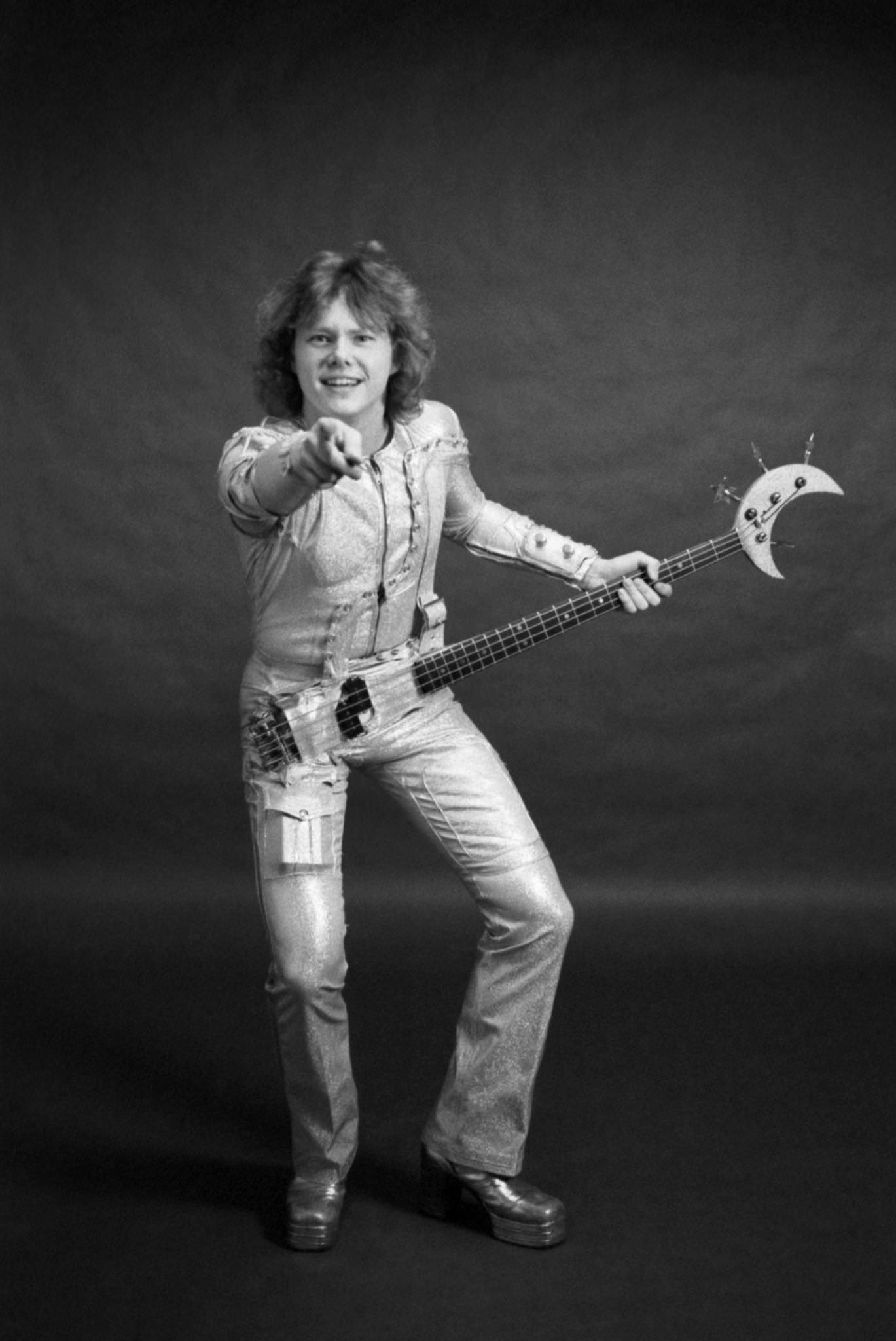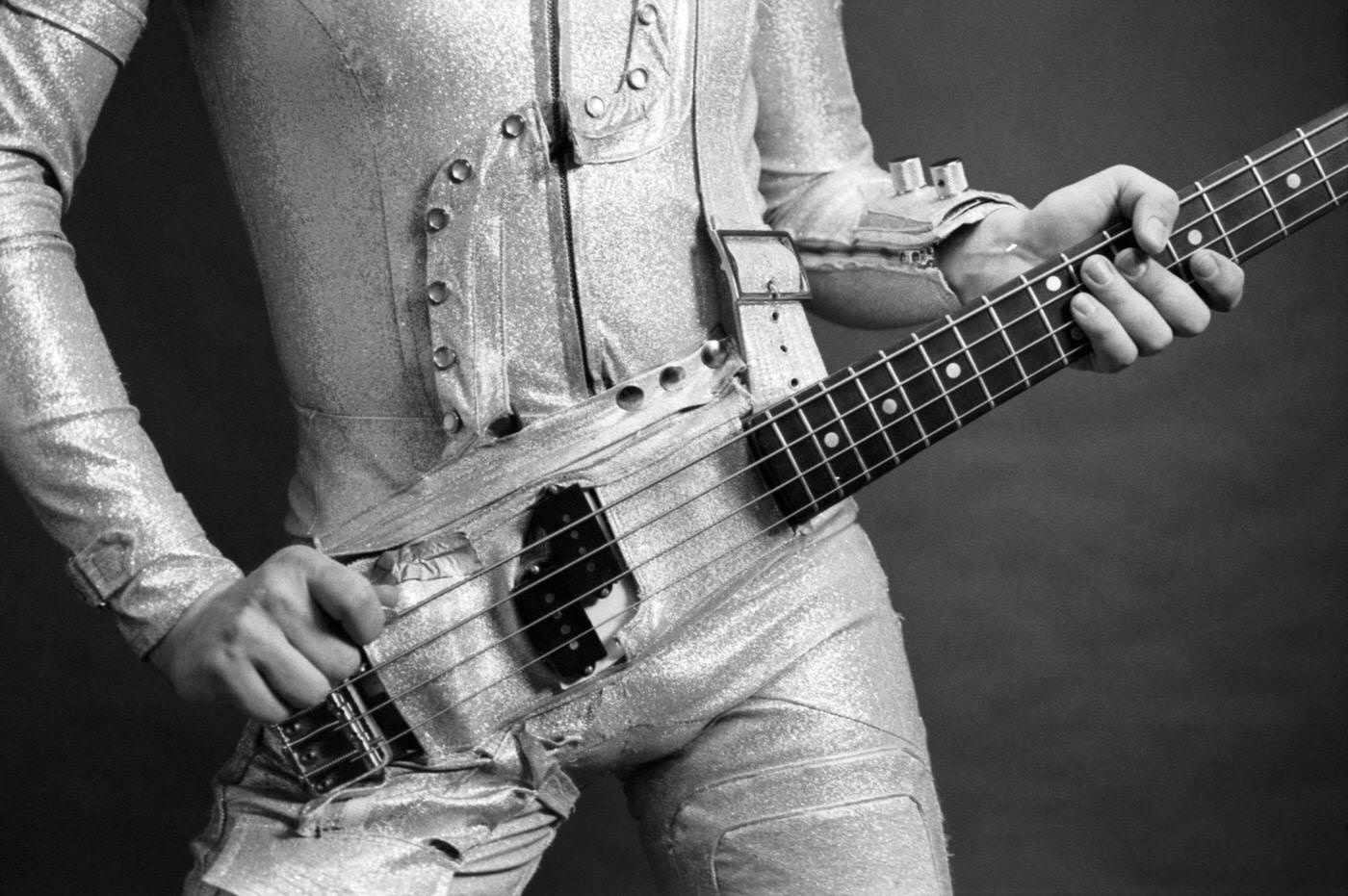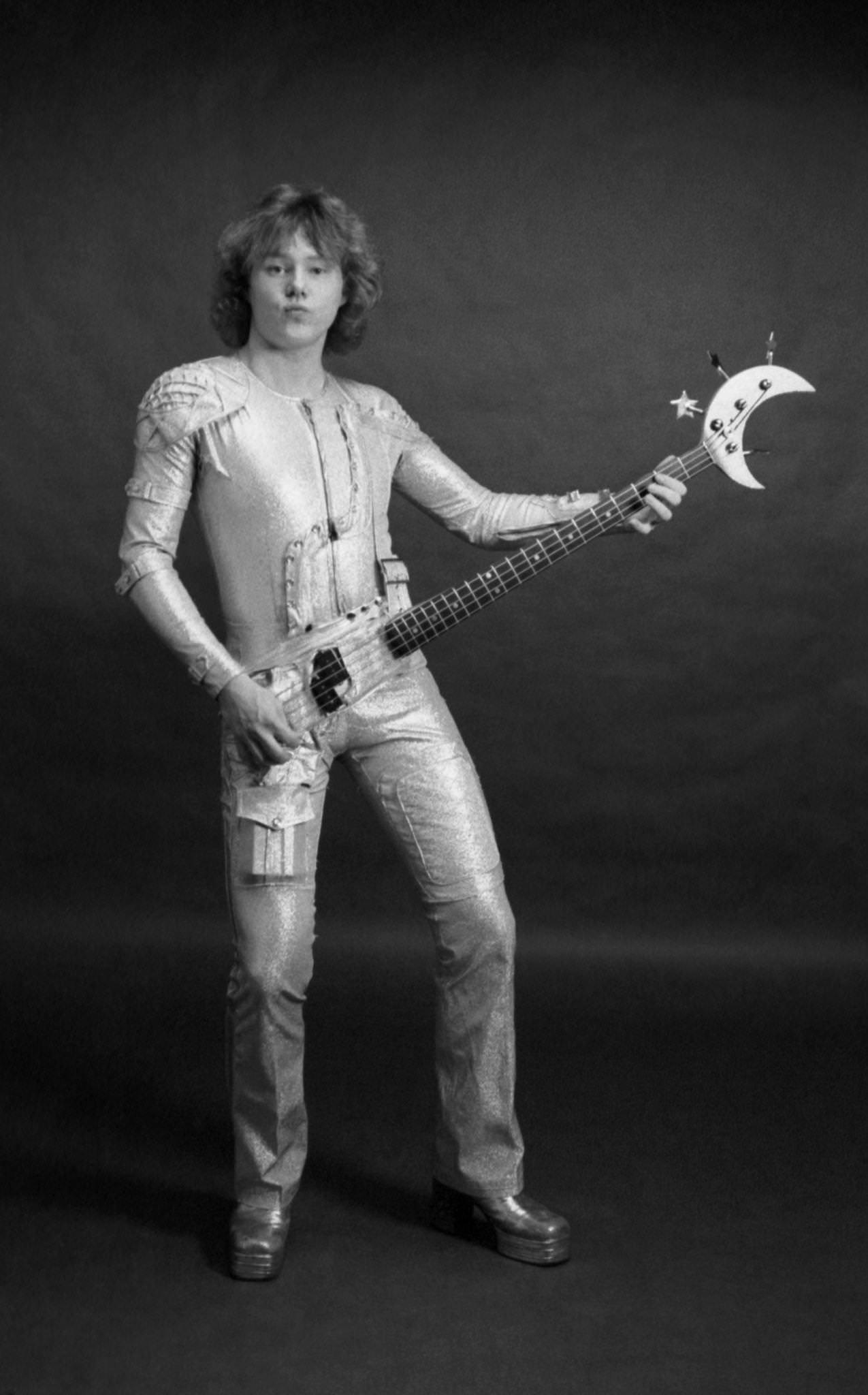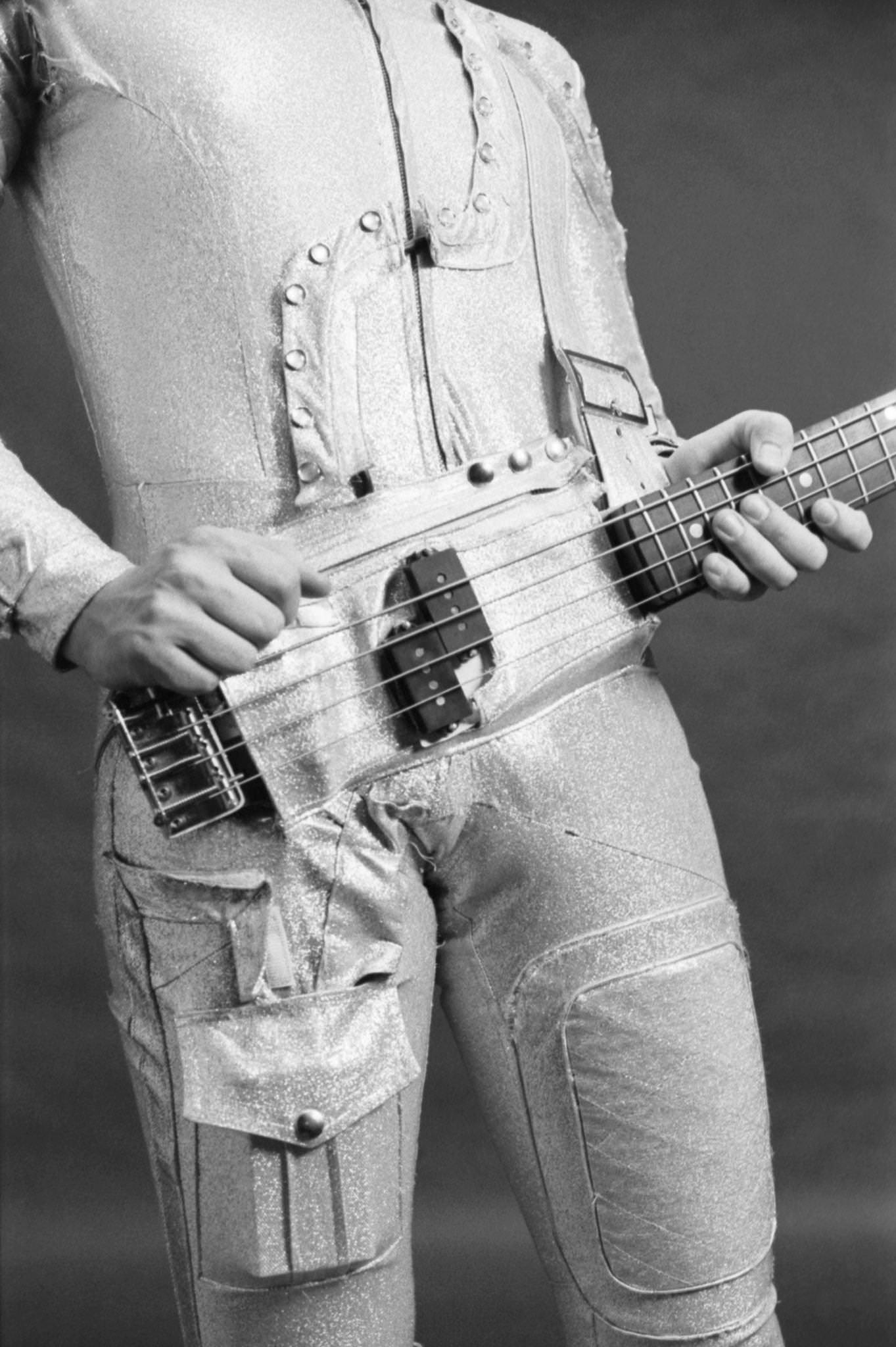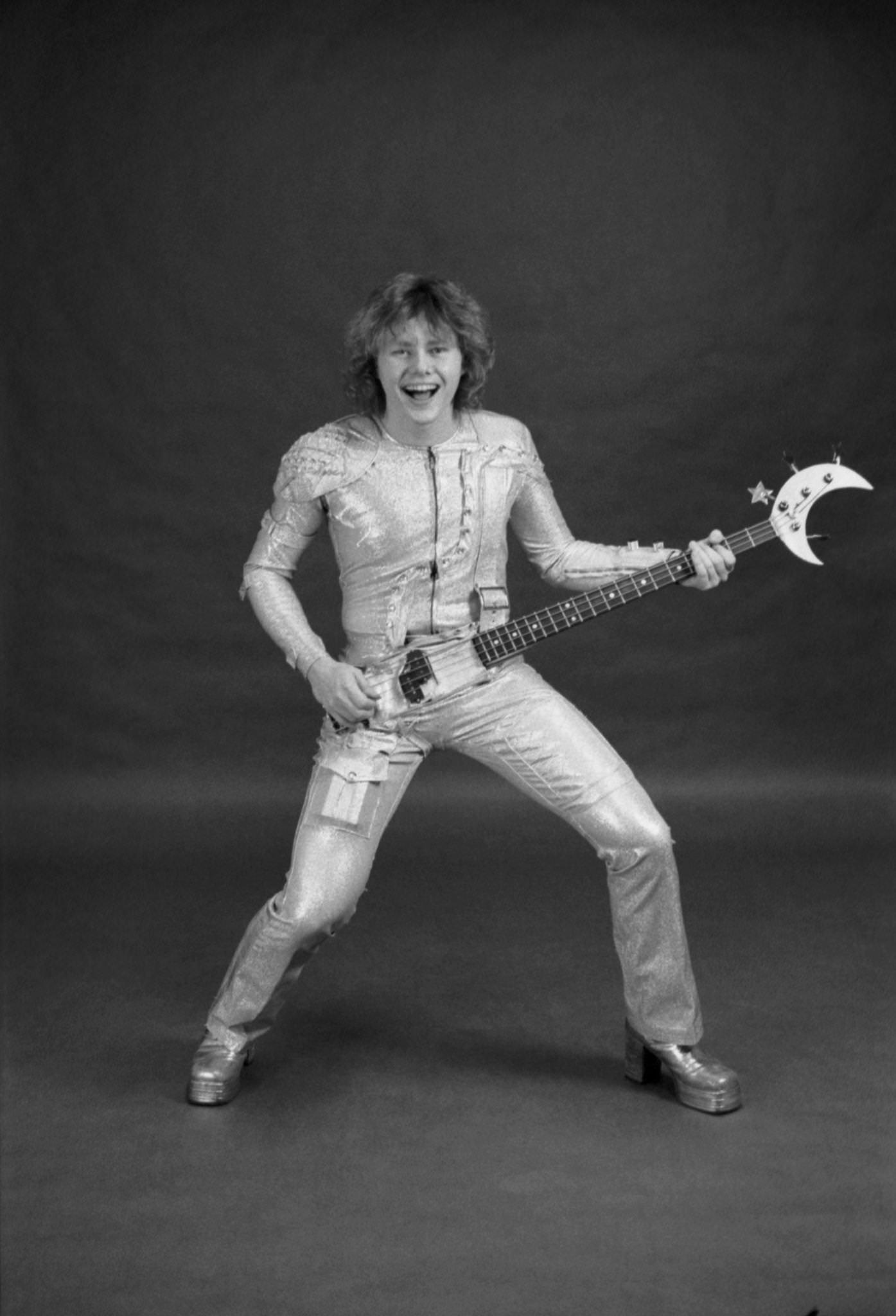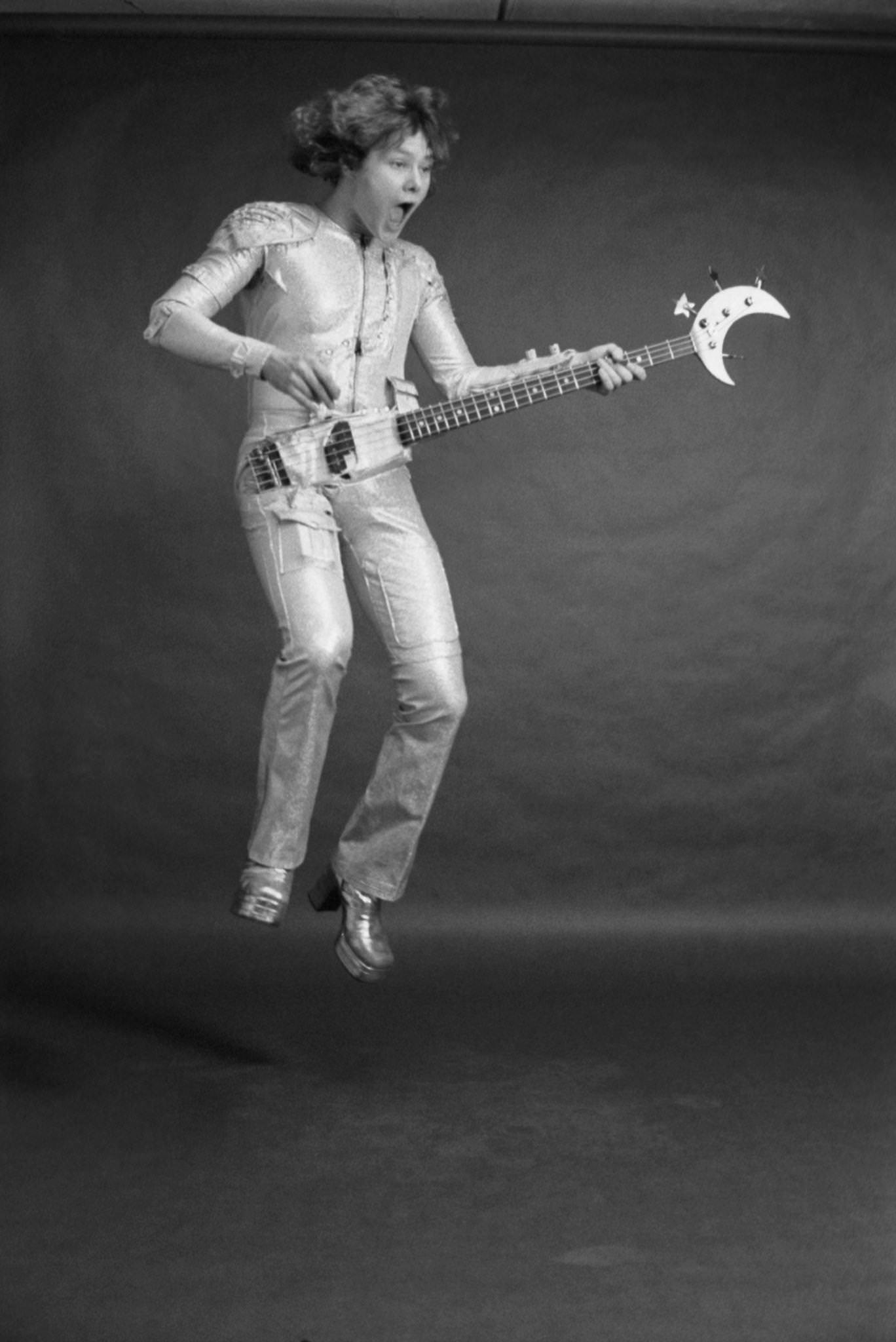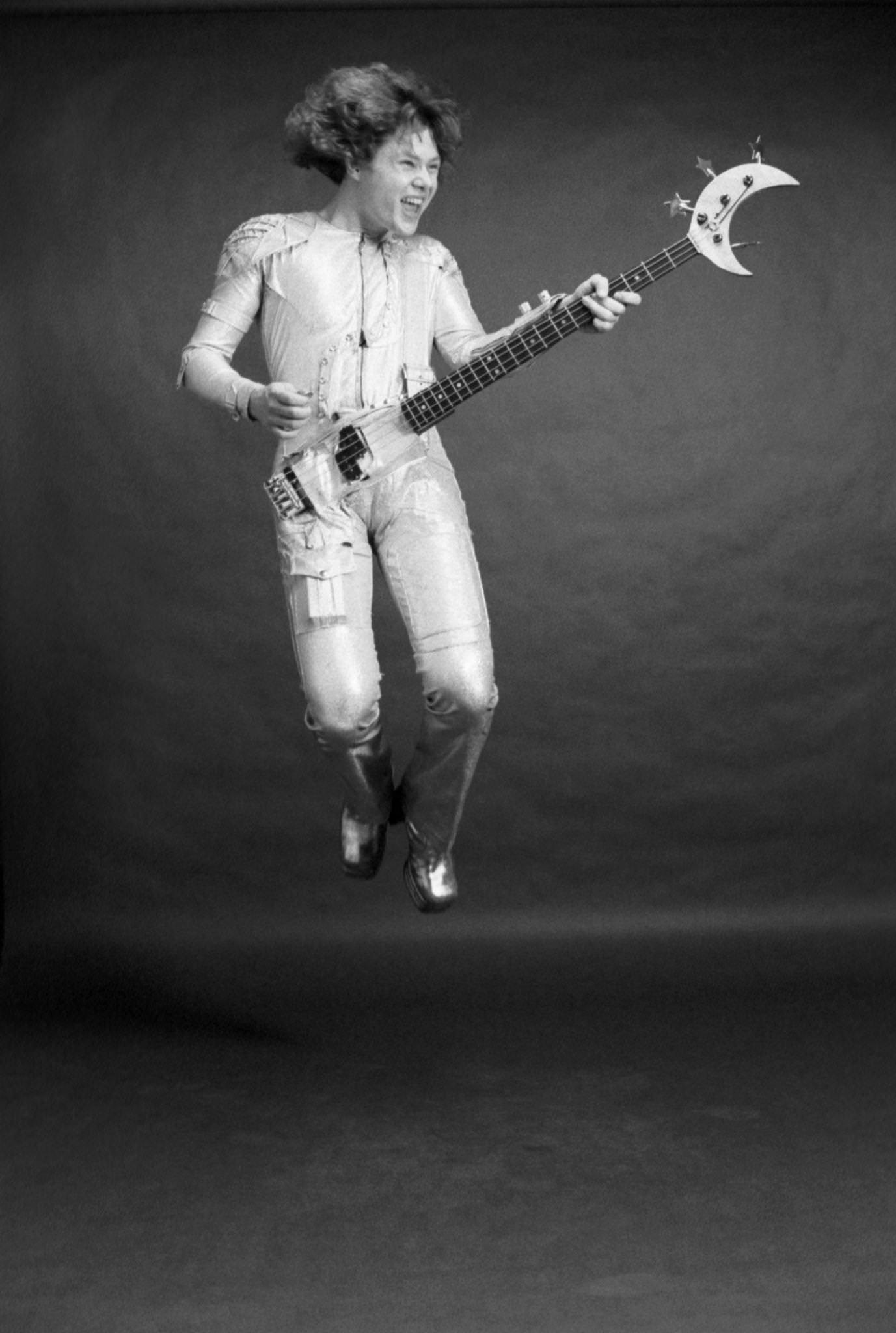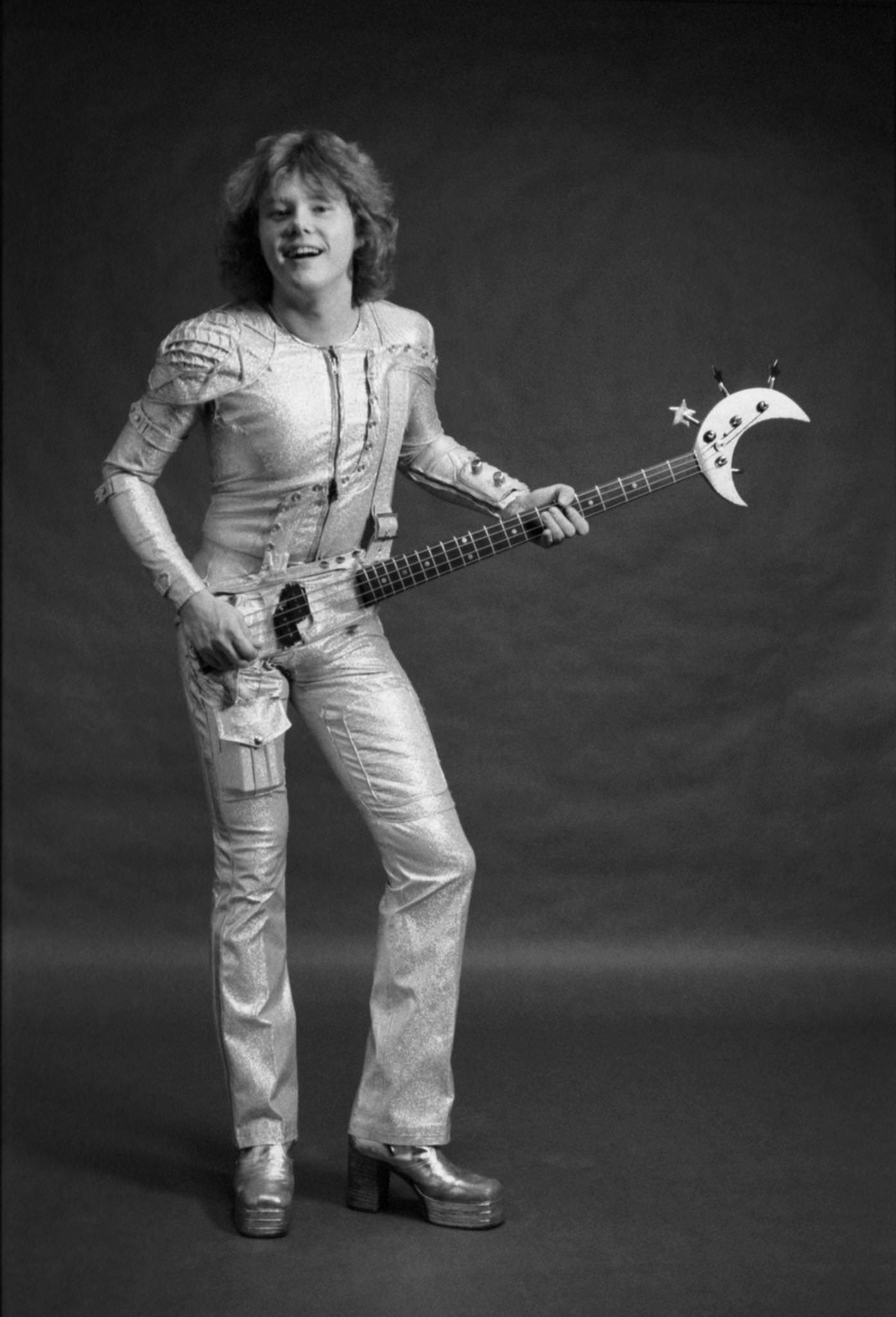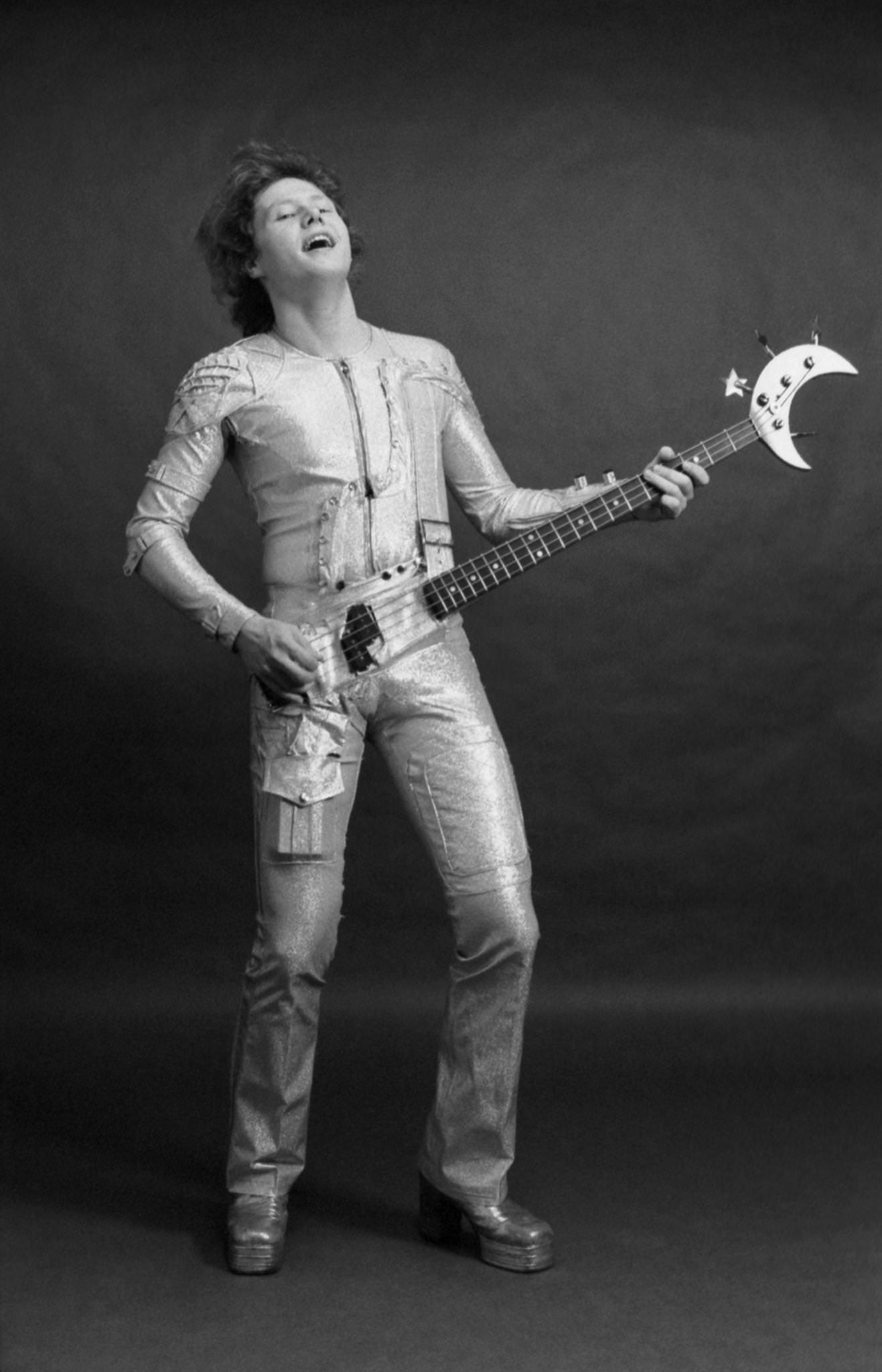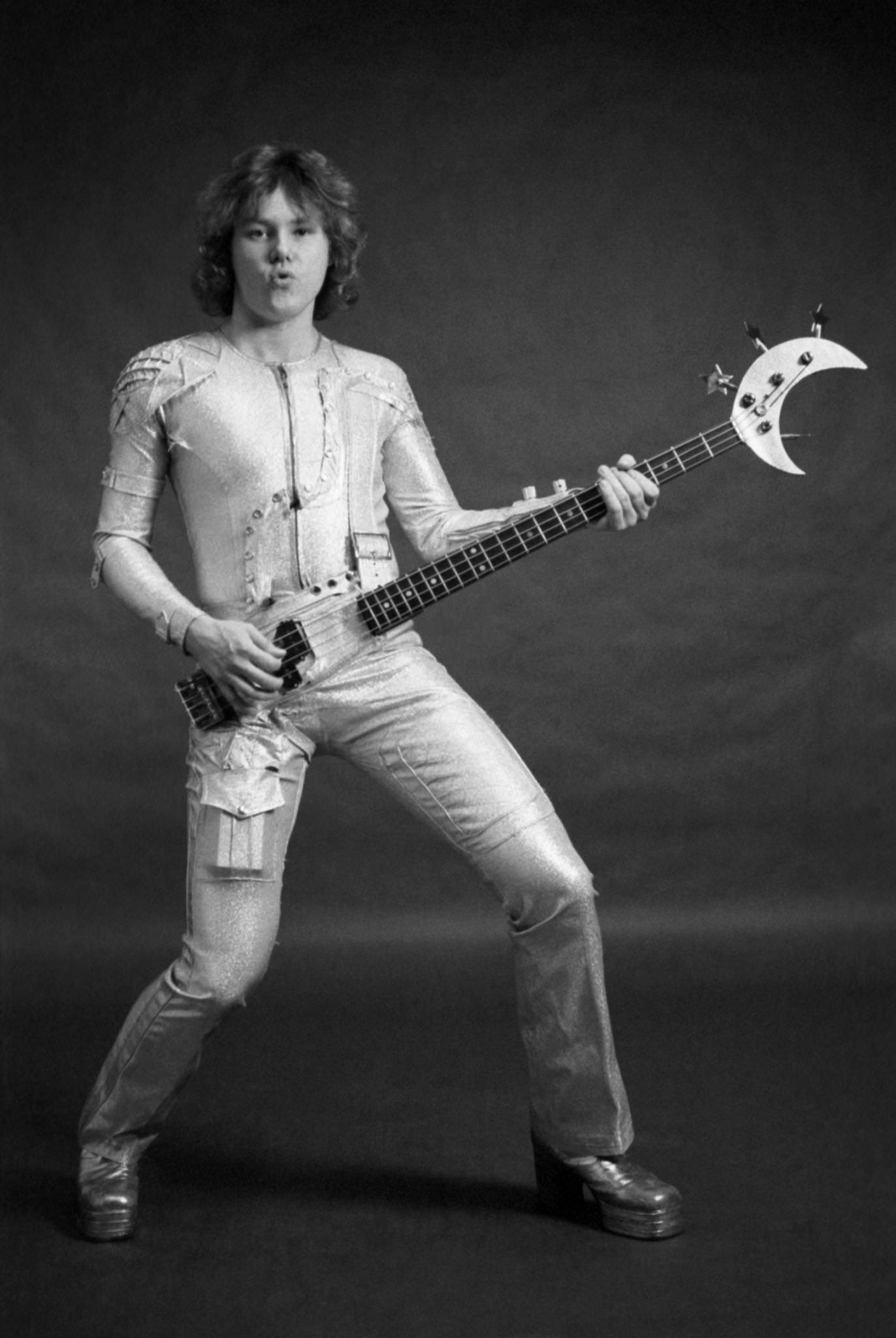Dan Hartman was a multi-talented musician, producer, and songwriter who left an indelible mark on the music industry in the 1970s and 1980s. He was a founding member of the Edgar Winter Group and was responsible for some of their biggest hits, including “Free Ride” and “Frankenstein.” However, his solo career truly showcased his creativity and inventiveness as an artist. One of his most memorable creations was his “bass suit,” a unique and innovative instrument that combined fashion and function in a way that had never been seen before.
The bass suit was first introduced to the world in 1974. Hartman had already scored a massive hit with his disco-infused single “Instant Replay” in 1978, and he was eager to continue pushing the boundaries of what was possible in music. The bass suit was his way of doing just that. Hartman created an early version of the bass suit in 1974 but did not fully develop the instrument until 1981. The version he created in 1981 was the more well-known and refined version he used for his performances.
The bass suit was a wearable instrument that allowed Hartman to play bass lines with his body. The suit was made up of wires and sensors attached to Hartman’s clothing and allowed him to trigger different bass notes and rhythms simply by moving his arms, legs, and body. The suit was connected to a series of amplifiers and speakers, allowing the audience to hear the bass lines in real-time.
The bass suit was an instant sensation, and Hartman soon became a performer in high demand. He appeared on a variety of television shows, including “American Bandstand” and “The Merv Griffin Show,” and his live performances were always a highlight of any concert or festival he played. Audiences were captivated by the spectacle of watching Hartman move and dance on stage while simultaneously playing a funky bass line with his body.
However, the bass suit was more than just a gimmick or a flashy stage prop. It was also a legitimate musical instrument that Hartman used to create some of his most memorable and enduring tracks. Songs like “We Are The Young” and “I Can Dream About You” featured prominent bass lines played entirely using the bass suit. Hartman’s use of the instrument was both innovative and intuitive, and it helped to define the sound of his music in the 1980s.
Unfortunately, the bass suit was also a source of frustration for Hartman. The technology behind the suit was still relatively new and untested, and it often malfunctioned during live performances. The sensors and wires would come loose or disconnect, causing Hartman to lose his connection to the instrument and the music. Hartman was also plagued by technical difficulties with the amplifiers and speakers, which would sometimes fail or short-circuit during a show.
Despite these challenges, Hartman continued using the bass suit throughout his career, which remains one of his most enduring legacies. The bass suit was a testament to Hartman’s creativity, innovation, and willingness to take risks in pursuit of his art. It also symbolised his deep love for music and his desire to create something truly unique and unforgettable.
In the years since Hartman’s death in 1994, the bass suit has taken on a life of its own. It has been the subject of numerous documentaries and articles, inspiring countless musicians and artists to experiment with new and unconventional music creation methods. Today, the bass suit is remembered as a groundbreaking and influential piece of musical technology that helped to shape the sound of the 1980s and beyond.


